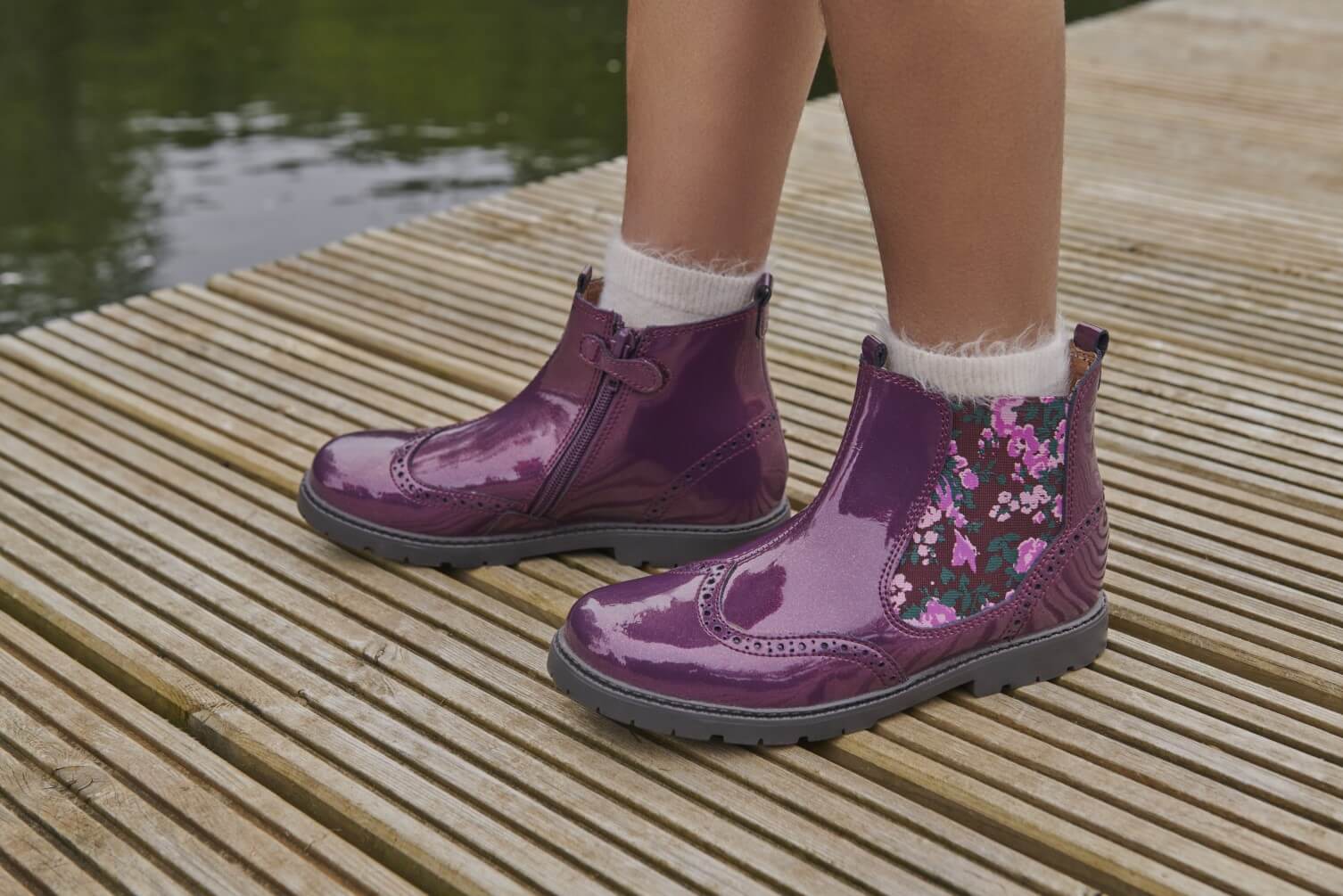
When it comes to choosing the best material for children's socks, there are several options to consider. Each material has its own pros and cons, and the choice will depend on your preferences, the specific needs of your child, and the intended use of the socks.
Below we explore some of the most common materials used in children's socks to help you understand and decide which materials are key for your child’s needs.
Cotton is a popular choice for socks as it is soft, breathable, and comfortable. It is also hypoallergenic, making it suitable for children with sensitive skin. Cotton socks can absorb moisture and help keep the feet dry, making them a great option for everyday wear. However, cotton socks may not provide much insulation in colder conditions.
Bamboo socks are becoming increasingly popular due to their softness, breathability, and natural antibacterial properties. They are highly absorbent and can wick moisture away from the skin, helping to keep the feet dry. Bamboo is also a renewable and eco-friendly material. However, bamboo socks may not be as durable as other materials.
Wool socks are excellent for keeping feet warm in cold weather. Wool is a natural insulator and can retain heat even when wet. It is also moisture-wicking, keeping the feet dry and preventing odour. However, some children may find wool socks itchy or uncomfortable, so it is essential to choose high-quality, soft wool options.
Synthetic materials like polyester or nylon are commonly used in sock blends. These materials are known for their durability and stretch. They are often combined with natural fibres to enhance the sock's performance. While synthetic fibres are less breathable than natural materials, they are excellent for athletic or active wear where moisture management and durability are essential.
Many children's socks are made from a blend of materials to combine their individual benefits. Blends can provide the best of both worlds, such as the moisture-wicking properties of synthetic fibres and the comfort of natural materials./p>
Ultimately, there is no one best material for socks as it depends on your child's preferences, needs, and the intended use of the socks. Consider factors such as breathability, softness, moisture-wicking properties, warmth, and durability when selecting socks for your child. It may also be a good idea to have a variety of sock materials on hand to cater to different activities and weather conditions.
When it comes to finding the warmest socks, wool is often considered the best material. Wool is a natural insulator and has excellent thermal properties, making it an ideal choice for keeping feet warm in cold weather. The natural structure of wool fibres traps air pockets, which provides insulation and helps retain heat.
Merino wool, in particular, is highly regarded for its warmth and comfort. It is a fine and soft type of wool that comes from Merino sheep. Merino wool is excellent at regulating body temperature, keeping the feet warm in cold conditions and cool in warm conditions. It is also moisture-wicking, meaning it can absorb and release moisture, keeping the feet dry.
Wool socks are commonly used for outdoor activities such as hiking, skiing, and camping, as they provide excellent insulation and can keep the feet warm even when wet. However, it's important to note that some individuals may find wool socks to be itchy or uncomfortable, so it's essential to choose high-quality, soft wool options or look for socks with a wool blend for added comfort.
During winter months, choosing wool or wool blend socks can help provide the warmth and insulation needed to keep your child's feet cosy.
There are several materials that are commonly used for athletic socks due to their known performance. Some of the best materials for athletic socks include synthetic fibres (Polyester, Nylon, and Spandex), Bamboo, Merino wool and Coolmax (as well as own brand equivalents).
Synthetic materials offer moisture-wicking properties, which help to keep feet dry by quickly pulling sweat away from the skin. They also provide durability and stretch, ensuring a snug fit and preventing the socks from slipping during physical activity.
Bamboo socks are known for being soft, breathable, and odour resistant and bamboo-derived fibres have become popular in athletic socks due to their moisture-wicking and anti-bacterial properties.
While commonly associated with warmth, Merino wool can also be suitable for athletic socks. It has excellent moisture-wicking properties, regulates temperature effectively, and is naturally odour resistant. Merino wool athletic socks are often blended with synthetic fibres to enhance their performance.
Coolmax is a moisture-wicking polyester fabric specifically designed to keep feet cool and dry. It is frequently used in sports and athletic socks due to its ability to wick away sweat and maintain breathability.
The best material for athletic socks depends on personal preference and the specific activity your child will be undertaking. Experimenting with different materials can help you find the perfect athletic socks for their needs.
When it comes to keeping children's feet cool, there are a few materials that are known for their breathability and moisture-wicking properties. Some of the best sock materials for keeping children's feet cool include cotton, bamboo, Coolmax and mesh or ventilated panels.
Some socks feature mesh or ventilated panels in specific areas, such as the top or sides of the foot. These panels enhance breathability and airflow, helping to keep children's feet cool even in hotter conditions.
When choosing socks to keep children's feet cool, it's essential to consider not only the material but also the fit, size and thickness. Opting for lightweight, breathable, and moisture-wicking materials, along with proper shoe ventilation, can help ensure that children's feet stay cool and comfortable throughout the day.
Author: Amanda, published 06-09-2023.